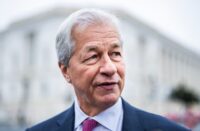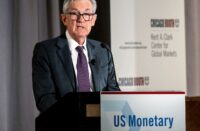Federal Reserve Board Governor Michelle Bowman expressed her views on the status of monetary policy during a meeting of the American Bankers Association in San Diego, California on February 11, 2019. Her public remarks marked her first appearance as a federal policymaker.
In her speech, Bowman stated that she believes the current monetary policy is in a favorable position. However, she emphasized that she wants to see more evidence of progress on inflation before considering further reductions in interest rates.
Bowman expressed her desire for more assurance that the downward trend in inflation will persist as the Federal Reserve deliberates further modifications to the target range. She acknowledged that the increase in the core goods price inflation since the previous spring has impeded progress.
Despite her expectation that inflation will continue to slow down this year, she cautioned that the process of disinflation could take longer than anticipated. She also voiced her concerns about the potential risks to price stability, especially in the context of a robust labor market.
The most recent data shows that inflation in January exceeded expectations, with a monthly increase of 0.5% compared to the predicted rise of 0.3% by Dow Jones. This resulted in an annual inflation rate of 3%, exceeding the consensus forecast of 2.9%.
During its policy meeting in January, the Federal Reserve kept its target rate steady, ranging between 4.25% and 4.5%. On Monday, Bowman asserted that the current level is suitable for allowing the Committee to exercise patience and scrutinize the evolving inflation data.
Bowman also mentioned that the present policy stance offers the opportunity to evaluate additional economic activity indicators and gain more insight into the impact of the administration’s policies on the economy.
The imposition of tariffs by President Donald Trump on some of the U.S.’s biggest trading partners has sparked fears of price hikes among economists. Furthermore, hopes for more interest rate reductions in 2025 have been dampened due to Trump’s trade policies. Currently, traders are only factoring in a single quarter-percentage-point decrease in rates this year, as per data from the CME Group.




